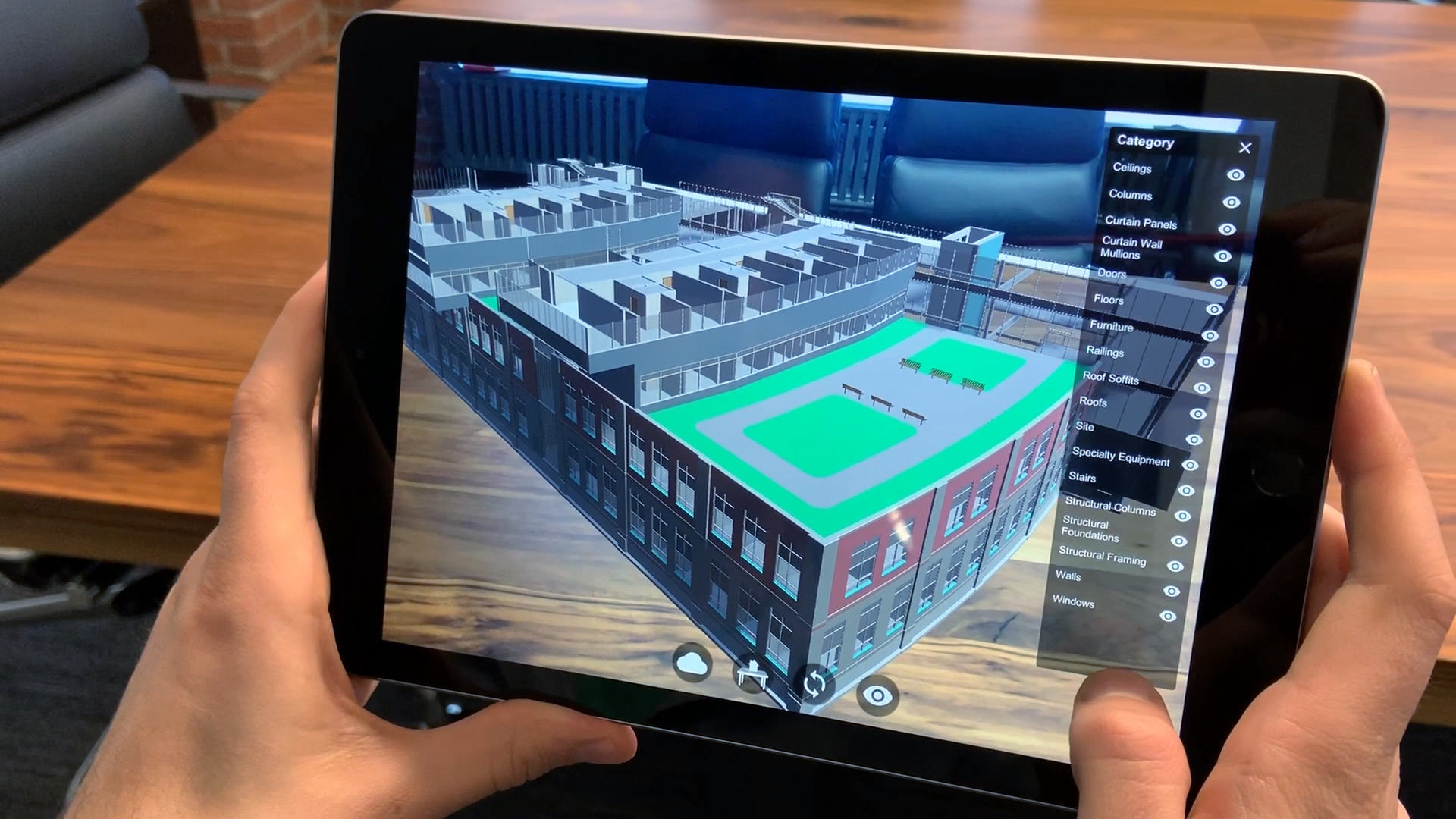Unity Technologies, primarily known for their 3D development and gaming platforms, has introduced its first AEC-focused product with a real-time 3D viewer that integrates with Autodesk Revit. The new product, named Reflect, allows users to seamlessly import BIM and CAD data and create a single, interactive rendering that is accessible on a variety of devices. The result of a months-long collaboration between Autodesk and Unity, Reflect was debuted at the 2019 American Institute of Architects conference in June.
Connecting Unity’s powerful viewing software with Revit with only a few clicks, Reflect could be a game-changer for Revit power users. When users want to share their work with a team, they can now do so with both high accuracy and broad device compatibility. Working closely with Autodesk on this effort has helped Unity to ensure that they bring Revit and BIM data through with the best possible fidelity.
The tool allows Revit users to export files directly into Unity (and vice versa). Users can take advantage of the power of Revit for design, pairing it with Unity’s broad compatibility that includes mobile, tablet, and VR/AR platforms. Unity’s goal with Reflect was to make these types of data viewable for anybody with any device, and collaborators won’t need to be in the same room or on the same device to make real-time changes.
While a critical goal of the integration was to make the tools work together with minimal effort required, Reflect hopes to act as more than just a bridge.
“This is beyond interoperability,” says Tim McDonough, the GM of Industrial for Unity, “we’re hoping to unlock the power of BIM.”
One of the most groundbreaking features is the ability for real-time collaboration between both platforms. If a user wants to see what a planned room would look like with another window, for example, the change can be made in Revit and team members can immediately see those changes in Unity Reflect.
This could eliminate the need to pass multiple copies of versioned files between contractors. Having the master plan in a single, accessible place could reduce the errors caused by using outdated or mismatched versions of a site plan, eliminating costly re-dos that can derail project timelines.
A typical workflow for making design changes entails multiple iterations of files being sent back and forth, which can add a lag time of days or weeks to process change requests. The ability to request and view changes in the construction and preconstruction phases should not only reduce the amount of time for changes to be reviewed but could make an appreciable difference in cost as well by reducing errors.
The partnership was a natural fit or Autodesk and Unity, as they share a large, overlapping customer base that uses their products for a variety of engineering, construction and architecture applications. According to McDonough, customers who used both tools often requested that they were easier to connect.
“We really wanted to cut a lot of the inefficiency out of that process.”
Reflect will be released first in closed beta testing and will initially have the ability for the real-time collaboration features to be utilized on closed networks. The ability to connect to the cloud is slated to be added soon thereafter. To learn more about Unity Reflect and to request access to the closed beta test, visit Unity’s website or contact Crystal Garcia, Business Development lead for AEC, at [email protected].






